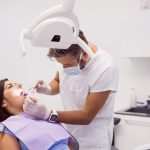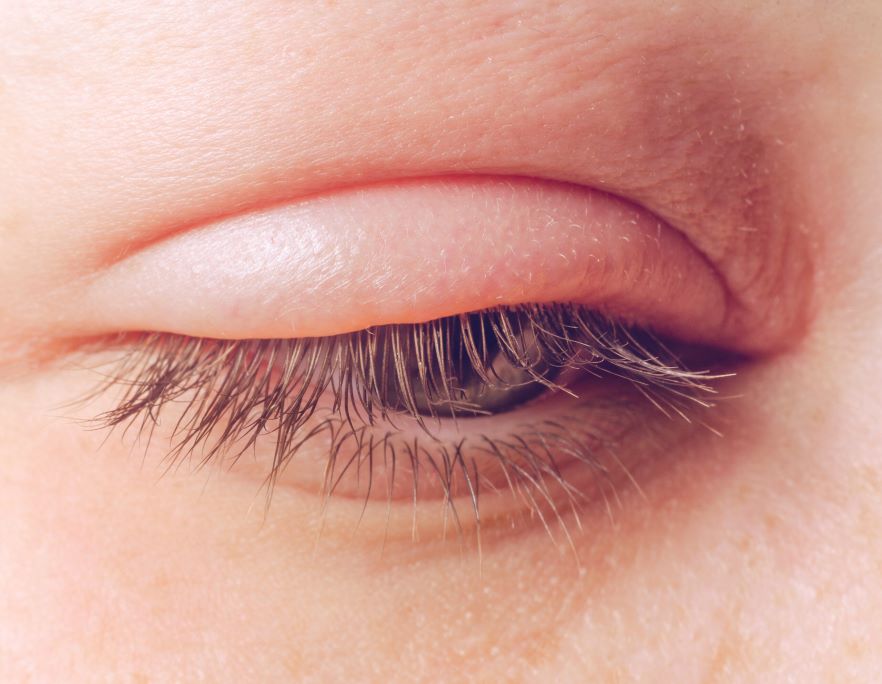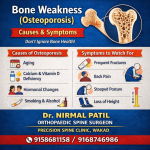Blepharitis is a common and persistent eye condition that causes inflammation of the eyelids, typically at the base of the eyelashes. Though not usually sight-threatening, it can cause significant discomfort, irritation, and cosmetic concerns for many individuals. It often becomes a chronic issue requiring consistent management rather than a single course of treatment.
At Chetna Hospital, Chinchwad, under the care of Dr. Rachana Tiwari Patil, we frequently encounter patients experiencing the uncomfortable symptoms of blepharitis. Understanding this condition is the first step toward effective management and relief.
What is Blepharitis?
Blepharitis refers to inflammation of the eyelid margins. It can affect people of all ages but is more commonly seen in those with oily skin, dandruff, or certain skin conditions like rosacea. Blepharitis can occur on the front (anterior blepharitis) or the back part (posterior blepharitis) of the eyelid.
Types of Blepharitis:
- Anterior Blepharitis: Affects the outside edge of the eyelid where the eyelashes are attached.
- Posterior Blepharitis: Involves the inner edge of the eyelid that comes in contact with the eyeball, typically associated with Meibomian Gland Dysfunction (MGD).
Causes of Blepharitis:
Blepharitis can have multiple causes, often occurring as a combination of factors rather than a single trigger.
🔹 Common Causes Include:
- Bacterial Infections: Overgrowth of bacteria on the skin near the eyelids can lead to inflammation.
- Blocked Oil Glands (Meibomian Gland Dysfunction): These glands help maintain a healthy tear film. When blocked, they can cause irritation and inflammation.
- Dandruff (Seborrheic Dermatitis): Flaky skin on the scalp and eyebrows can extend to the eyelids, contributing to inflammation.
- Rosacea: A skin condition that can lead to ocular rosacea, causing redness and swelling of the eyelids.
- Allergies: Allergic reactions to makeup, eye drops, or environmental factors can lead to chronic eyelid irritation.
- Poor Eyelid Hygiene: Lack of proper cleaning around the eyes and eyelashes can allow bacteria and debris to accumulate.
- Mite Infestation (Demodex): Tiny mites living in eyelash follicles may contribute to chronic blepharitis.
Symptoms of Blepharitis:
Patients with blepharitis may experience varying degrees of symptoms depending on the severity of the condition.
🔸 Common Symptoms Include:
- Red, swollen eyelids
- Itchy eyelids or eyes
- Burning or stinging sensation in the eyes
- Gritty or foreign body sensation
- Excessive tearing (watery eyes)
- Crusty eyelashes, especially upon waking
- Sensitivity to light
- Blurred vision due to tear film disruption
- Loss of eyelashes (in severe cases)
Why Should Blepharitis Not Be Ignored?
While blepharitis is not typically dangerous, neglecting treatment can lead to:
- Recurring eye infections
- Dry eye syndrome
- Chronic discomfort
- Sty (chalazion) formation
- Damage to the cornea in severe cases
Early diagnosis and appropriate care can help avoid complications and improve the patient’s quality of life.
Diagnosis of Blepharitis:
An accurate diagnosis is essential for effective treatment. At Chetna Hospital, Chinchwad, Dr. Rachana Tiwari Patil performs a detailed eye examination to diagnose blepharitis, which may include:
- Slit-lamp examination to closely inspect the eyelid margins, eyelashes, and tear film.
- Checking for blocked oil glands or eyelid crusting.
- Identifying any underlying skin conditions contributing to the problem.
If necessary, further tests like tear film analysis or Demodex detection may be advised.
Treatment of Blepharitis:
Blepharitis management requires a combination of treatments and lifestyle changes. While there is no permanent cure, symptoms can be significantly reduced with consistent care.
🔹 1. Eyelid Hygiene (Mainstay of Treatment):
Daily eyelid cleaning is critical. This includes:
- Warm Compresses: Apply a warm, moist cloth over closed eyelids for 5-10 minutes to loosen crusts and unclog oil glands.
- Lid Scrubs: Clean the eyelid margins with a diluted baby shampoo solution or medicated eyelid wipes.
- Massage: Gentle eyelid massage can help express clogged oils from the Meibomian glands.
🔹 2. Medications:
Depending on the severity, your ophthalmologist may prescribe:
- Antibiotic ointments or eye drops (if bacterial infection is suspected)
- Steroid eye drops or ointments for short-term inflammation control
- Oral antibiotics (for severe or rosacea-related blepharitis)
- Artificial tears for dry eye relief
🔹 3. In-Clinic Procedures (If Needed):
- Meibomian Gland Expression Therapy
- LipiFlow / Thermal Pulsation Treatment (if available)
- Debridement of eyelid margins
🔹 4. Lifestyle & Home Remedies:
- Avoid eye makeup during active flare-ups.
- Replace old eye cosmetics frequently.
- Use anti-dandruff shampoo if scalp dandruff is contributing.
- Protect eyes from dust, smoke, and allergens.
- Maintain good general hygiene.
Living with Blepharitis:
For many, blepharitis becomes a chronic condition that needs ongoing maintenance, much like managing acne or dandruff. Flare-ups are common, especially in people with skin conditions like rosacea or seborrheic dermatitis.
With the right care plan, patients can significantly reduce the frequency and severity of symptoms.
Contact us on 9168690448 / 9158681123
Website – www.chetnahospital.co.in
Sambhajinagar, MIDC, G Block, Near Rotary Club, Chinchwad 411019
.
.
.
#hospital#pune#pcmc#chinchwad#medical#medicalservices#dryeyetreatment#dryeyerelief#dryeyedisease#dryeyetherapy#catract#catractsurgery#catracteyesurgery#catracteyeoperation#eyedoctor#eye#glaucoma#conjunctivitis#ophthalmologist#eyediseases#eyepain#pinkeye#hazeleyes#myopia#eyeinfection#amblyopia#dryeyesyndrome#eyeproblems#motibindu#motibinduoperation













